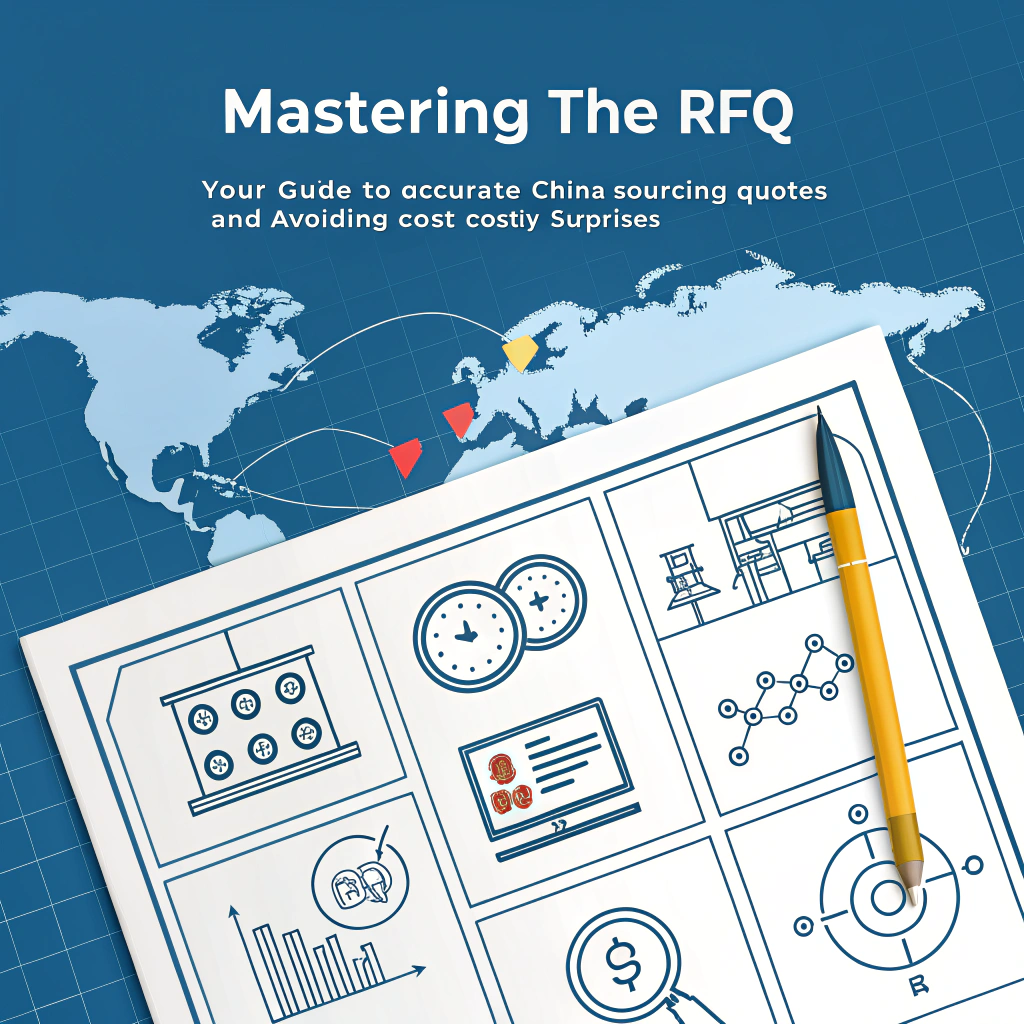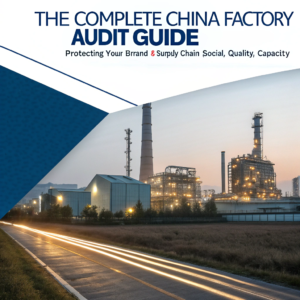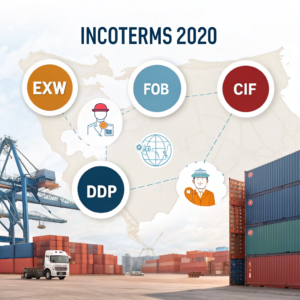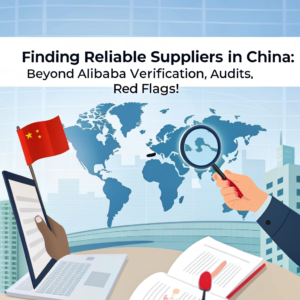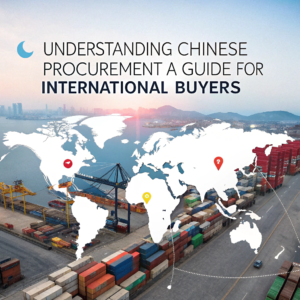Sourcing products from China can be a game-changer for businesses looking to balance quality and cost. But once you’ve found potential suppliers, the next step—getting accurate quotes—often becomes a sticking point. You might think that simply asking for a price is enough, but experienced importers know it’s rarely that straightforward. A vague or incomplete Request for Quotation (RFQ) can cause inaccurate pricing, hidden fees, production delays, and misunderstandings that could derail your entire sourcing project.
Mastering the RFQ process isn’t about creating unnecessary paperwork. Instead, it’s about gaining clarity, control, and reducing risks. It’s the foundation for securing realistic, comparable quotes and setting clear expectations with suppliers. This guide will walk you through how to craft an RFQ that delivers results you can trust and helps avoid costly surprises down the road.
Why Standard RFQs Often Fail in China Sourcing
Many sourcing projects falter because of unclear or incomplete RFQs. When your specifications are ambiguous, suppliers make assumptions based on their own standards, which may not match your expectations. This often leads to quotes reflecting lower-quality materials or cheaper processes than you want.
Without standardized requirements, quotes can vary widely, making it impossible to compare costs accurately. What starts as a seemingly good deal often reveals “gotcha” fees later on—additional charges for packaging, tooling, certifications, or quality control that weren’t mentioned upfront.
Misalignment over quality standards, testing needs, or delivery timelines frequently causes rejected goods or missed deadlines. On top of all this, unclear requests trigger a back-and-forth clarification cycle that wastes weeks of precious time.
Crafting a Bulletproof RFQ: The Essential Sections
Think of your RFQ as a detailed project brief. The more precise and complete your information at the start, the smoother everything else will be.
Supplier Information & Project Context
Start by introducing your company and providing the contact person’s details. Clearly label your project with a reference name and state the purpose of the RFQ—whether it’s for a new product launch, a repeat order, or dual sourcing.
Be transparent about your expected annual volume and rollout plan. This helps suppliers understand your scale and potentially offer better pricing tiers. Also, specify your target market (e.g., USA or European Union), as this influences compliance requirements.
Product Specification – No Room for Guesswork
One of the most critical parts of your RFQ is the product specification. Provide detailed technical drawings in formats like PDF, DWG, or STEP files. Include dimensions, tolerances, and exact materials to be used. Don’t leave any ambiguity here.
Alongside drawings, include a comprehensive Bill of Materials (BOM). List every component along with part numbers, material specifications (such as “Stainless Steel 304, Grade A”), color codes (Pantone is best), and sourcing instructions (whether the supplier provides or you’ll supply certain parts).
Clear Quality Standards and Testing Requirements
Specify performance criteria like load capacity or waterproof ratings. Define your Acceptable Quality Limit (AQL) for inspections—this tells suppliers what defect levels are allowable (for example, AQL 1.0 for critical defects).
List mandatory tests such as drop tests or certifications like UL, CE, FCC, FDA, or CPSIA. Clarify who will cover testing costs.
Also request necessary quality documents such as Certificates of Analysis (CoA), test reports, and compliance declarations.
Packaging Requirements: Protect Your Product and Brand
Packaging is often overlooked but plays a huge role in product safety and retailer acceptance.
Describe inner pack details like blister packs or poly bags, noting if bags need to be sealed or have specific thicknesses. Mention foam inserts if required.
For outer cartons, provide dimensions, material specs (such as double-wall B-flute corrugated cardboard), printing needs (barcodes, logos), handling marks, and maximum carton weight.
Don’t forget palletization instructions—stacking patterns, pallet type (wood pallets must comply with ISPM 15 regulations), and stretch wrap details are all important.
Lastly, specify shipping marks and information that must appear on cartons.
Commercial Terms & Logistics: Setting Clear Boundaries
Your RFQ should clearly define financial terms to avoid confusion.
State your target FOB unit price with currency specified (usually USD). Choose an Incoterm® 2020 term explicitly—FOB Shenzhen, EXW Dongguan, or DDP Chicago—to clarify cost responsibilities between you and the supplier.
Outline payment terms clearly; common practice is 30% deposit by telegraphic transfer (TT) and 70% upon presentation of the Bill of Lading copy.
Specify initial order quantities and potential future volumes to give suppliers context. Clearly state your minimum order quantity (MOQ) requirements.
Delivery timelines are crucial. Provide lead times for samples (prototype, pre-production), production lead time from order confirmation to goods ready at factory or port, and total lead time if you know it (including shipment to your warehouse).
Define how long you expect quotes to remain valid—typically 30 to 60 days.
Supplier Qualifications & Response Requirements: Filter Your Partners
Ask suppliers to provide mandatory certifications like ISO 9001 or BSCI and any product safety certificates relevant to your industry.
Request examples of similar products they have manufactured to gauge experience.
Provide a response template or structured format for quotes—Excel spreadsheets often work best—to make comparing responses straightforward.
Require a detailed quote breakdown including unit cost, tooling/mold cost (non-recurring engineering), sample costs for prototypes and pre-production samples, packaging costs broken down by inner/outer/pallet levels, testing and certification fees, plus a FOB cost breakdown covering ex-factory cost plus domestic freight and port charges in China.
Include direct yes/no questions such as:
- Do you own the factory or are you a trading company?
- Can you provide references from US/EU importers?
- Do you have experience complying with specific regulations like UFLPA or Prop 65?
- What is your process for handling quality issues and returns?
China-Specific RFQ Tactics for Maximum Accuracy
Before asking for production quotes, require suppliers to provide sample quotes first. How they price prototypes (Proto) and pre-production samples indicates their capabilities and seriousness.
Be very explicit about materials; don’t just say “metal.” Use exact grades like “Zinc Alloy Zamak 3 ASTM B240” or “Virgin ABS Plastic UL94 V-0” to avoid downgrades.
State your quality control expectations upfront. If you want specific inspection stages such as Duplicate Production Inspection (DUPRO) or Final Random Inspection (FRI), say so—and clarify who covers the costs.
Define tooling ownership clearly—who owns the molds if production stops? This can prevent future disputes.
Clarify communication channels: preferred contact methods (email, WeChat), primary contacts, and expected response times.
Use visuals where possible — photos of similar products or packaging examples help eliminate misunderstandings over what you want.
The Sample Stage: Your RFQ Reality Check
Samples are your proof that supplier commitments meet your expectations.
Start with prototypes to test design feasibility; these might be rough but give early feedback on manufacturability.
Pre-production samples are made using mass production tools and materials—with these you verify final specifications before committing to large production runs. It’s crucial to test these against all your RFQ specs rigorously.
Sales samples come from the beginning of actual production runs and confirm consistency over time.
Never skip these stages; they validate your RFQ’s accuracy in practice.
Red Flags in Supplier RFQ Responses
Watch out for prices that seem too low—they often signal corners cut in materials or quality control.
Be wary of vague or incomplete responses without proper cost breakdowns or answers to your key questions.
Reluctance to provide samples or sample quotes is another warning sign—they may be hiding their true capabilities.
Pressure for large upfront payments beyond standard deposits adds unacceptable financial risk.
Quotes that ignore key specs and make assumptions instead show lack of attention to detail.
Unrealistically short lead times may indicate overcapacity issues or subcontracting risks that can compromise quality or delivery.
Falcon Logistics: Your Partner from RFQ to Delivery
Crafting a perfect RFQ is only step one. Managing the consequences—interpreting quotes correctly and handling complex production logistics—is where expert support becomes invaluable.
Falcon Logistics helps ensure your chosen Incoterms® are correctly understood and implemented so costs don’t come as a surprise later on.
We provide accurate freight cost estimates based on packaging specs from your RFQ to ensure your landed cost analysis is realistic.
Our compliance guidance helps you secure necessary documentation like test reports and certificates required for smooth customs clearance at your destination.
With years of experience working with various suppliers, we offer insights into supplier performance on shipment timelines and documentation quality—helping validate their reliability before you commit.
We also manage sample shipments efficiently so you can evaluate prototypes without logistical headaches.
Once purchase orders are placed post-RFQ approval, we coordinate complex logistics operations to ensure supplier “ready” dates translate into on-time delivery at your door.
Master Your Sourcing – Start with a Solid RFQ
An accurate and well-structured RFQ isn’t just paperwork; it’s your first defense against expensive sourcing mistakes. It forces clarity, enables true cost comparison, sets expectations for quality and delivery, and builds a foundation of trust with your supplier partners.
Don’t settle for vague quotes that leave room for surprises later on. Invest time upfront crafting your RFQ carefully—it will pay off many times over in saved money, time, and effort down the line.
For those ready to take their sourcing process seriously, Falcon Logistics offers an ultimate China Sourcing RFQ template that includes all critical sections and China-specific prompts designed to get suppliers giving you clear, comparable responses every time.
If you’re ready to source smarter from China and avoid costly surprises in sourcing quotes and production timelines, contact Falcon Logistics today. Let our expertise guide your RFQ strategy so your imports arrive smoothly and profitably every time.

